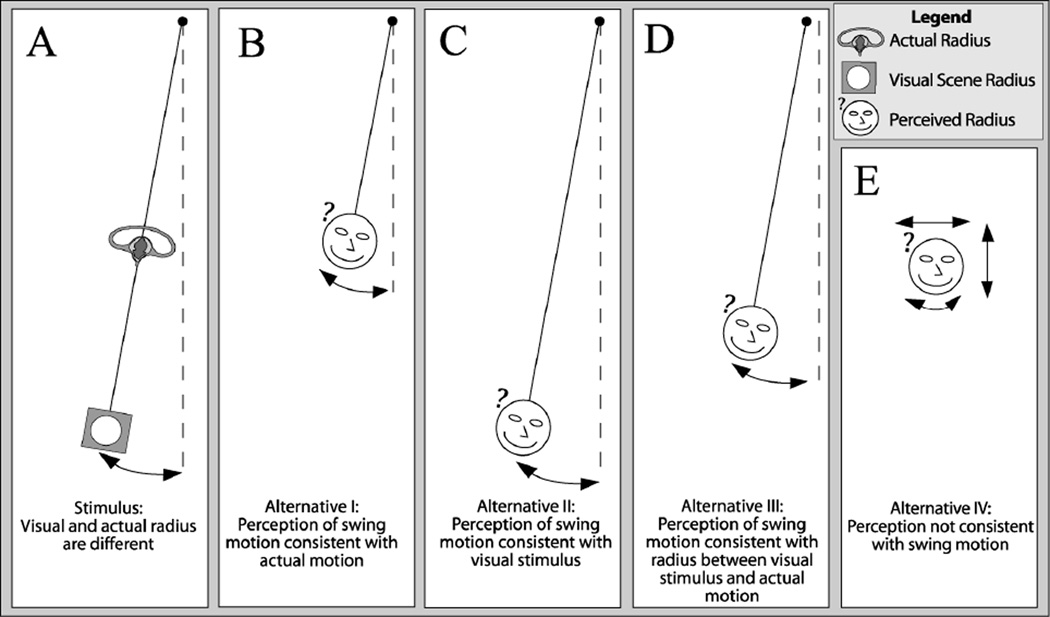Fig. 1.
(A) Graphical representation of one example combination of actual motion and visual scene combination used in the experiment. All actual motions and visual scenes represent swing motions at a chosen radius (which can agree or differ). (B–E) Alternative perceptions that could result from the stimulus: (B) Perception consistent with swing motion at the actual radius (ignoring the visual cues) (C): Perception consistent with swing motion at the radius shown by the visual scene (ignoring vestibular cues). (D): Perception consistent with swing motion derived from a weighted combination of visual and vestibular cues (our hypothesis). (E): Perception of general motion inconsistent with swing motion.

